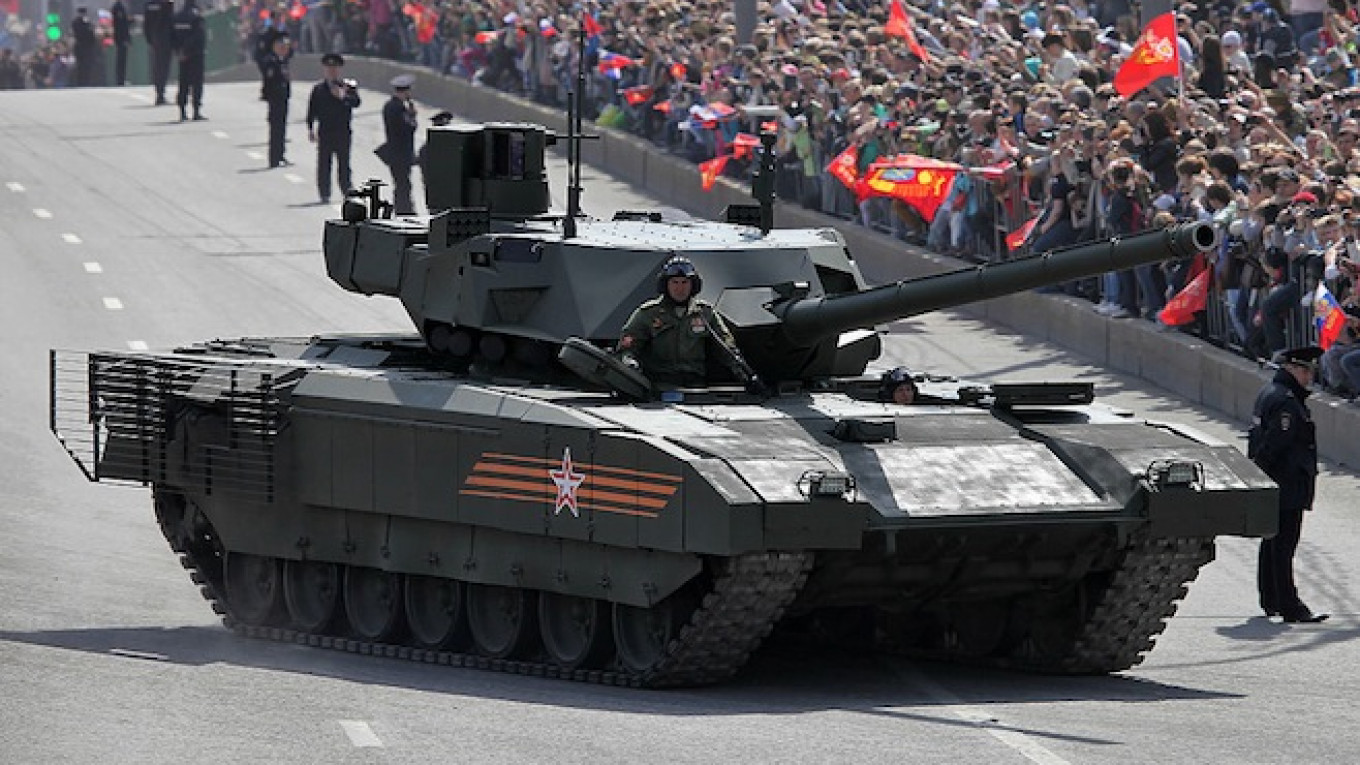Russia's new Armata tank is not only the best in the world, it is also invisible to radars, the deputy director of its manufacturer, UralVagonZavod, said in an interview with the Ekho Moskvy radio station late Monday.
“We essentially made the invisible tank,” Vyacheslav Khalitov said, adding that other easily detectable components of the tanks were placed deep within the tank to better mask its infrared signature — heat emissions generated by the tank that are easily seen by special optical equipment.
Russia unveiled the Armata tank to much fanfare in May as part of this year's blowout Victory Day celebrations, which marked the 70th anniversary of the defeat of Nazi Germany in World War II. The tank has been paraded as an unrivaled, modern design by its manufacturers and the Russian press.
Already touted as exceptionally deadly, the tank was designed with special stealth technologies, said Khalitov. In particular, the tank's hull features special radar absorbing paint and materials that make it resistant to rapid detection by radar, he explained.
If the tank is seen, it boasts a heavy “Ural armor” and electromagnetic defenses that confuse incoming guided projectiles — a type of defense known as softkill measures. The tank also sports what is known as a hardkill system — explosive plates layered on the hull of the tank that explode outward to destroy incoming projectiles.
In order to further boost the tank crew's survivability, Armata features a modular internal layout that separates the crew cabin from the gun and ammunition storage compartment. This in theory would allow the crew to survive a shot that detonates the tank's ammunition.
Although UralVagonZavod has gone out of its way to promote the features of its new tank — the first designed by Russia since the fall of the Soviet Union — it still has not entered serial production.
The first batch of Armata tanks was handed over to the military for testing this year, and procurement deals will be finalized later, with serial production expected to begin in 2017 or 2018. President Vladimir Putin has promised to buy up to 2,300 of the new tanks for the Russian military.
Contact the author at [email protected]
A Message from The Moscow Times:
Dear readers,
We are facing unprecedented challenges. Russia's Prosecutor General's Office has designated The Moscow Times as an "undesirable" organization, criminalizing our work and putting our staff at risk of prosecution. This follows our earlier unjust labeling as a "foreign agent."
These actions are direct attempts to silence independent journalism in Russia. The authorities claim our work "discredits the decisions of the Russian leadership." We see things differently: we strive to provide accurate, unbiased reporting on Russia.
We, the journalists of The Moscow Times, refuse to be silenced. But to continue our work, we need your help.
Your support, no matter how small, makes a world of difference. If you can, please support us monthly starting from just $2. It's quick to set up, and every contribution makes a significant impact.
By supporting The Moscow Times, you're defending open, independent journalism in the face of repression. Thank you for standing with us.
Remind me later.


